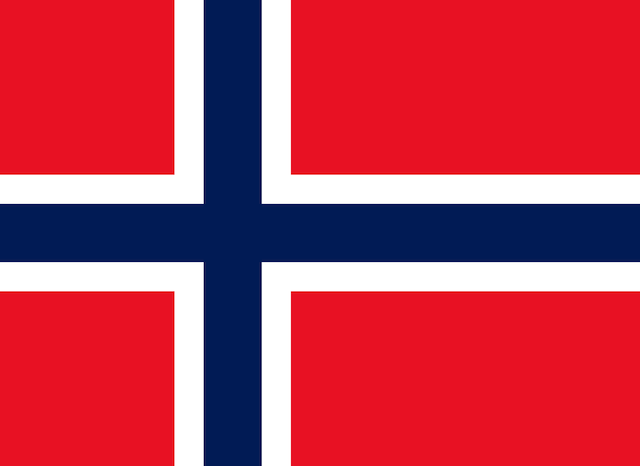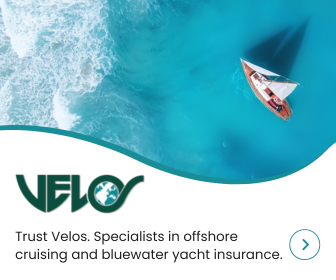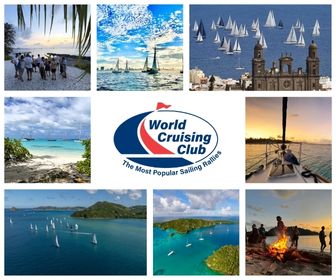Norway - Clearance
As of 1 January 2025, all foreign vessels entering or sailing in Norwegian waters (or foreign masters on a Norwegian flagged vessel, ie charting) that exceed 15 meters in length or 50 gross tonnes, are required to comply with new stricter reporting requirements. See this Report on Norway’s New Reporting Requirements for more details and this Noonsite Report – Norway: Navigating the New Regulations which include 3 first-hand accounts from cruisers affected by the new requirements.
Security and migration issues within the Schengen area along with the ongoing war in Ukraine may intensify checks and inspections on vessels entering Norwegian waters. See Security for more details on temporary Border Control measures.
Norway is not an EU Member State but it is part of the European Economic Area (EEA) and is part of the Schengen area. See Noonsite’s EU page for all EU regulations.
Norway Pre-Arrival Procedures for Yachts
All those entering Norway by boat are required to report their arrival 24 hours in advanced. Skippers can either complete this via SafeSeaNet Norway (SSNN) or by sending an e-mail to the police district where they plan to arrive. This requirement is mandatory for all vessels, including EU vessels and those arriving from another Schengen country.
Note: While SafeSeaNet Norway (SSNN) is largely geared to professionals/commercial vessels, recreational skippers can provide their information and be approved for an account as an independent owner. The easiest way to do this is to contact the SSNN help desk at support.ssnn@kystverket.no with vessel’s registry document, call sign and MMSI number.
SafeSeaNet Norway (SSNN) is an online portal of the national ship reporting system. Vessels can report mandatory arrival and departure information within the portal and that information is then automatically sent to national authorities such as the Norwegian Coastal Administration, the Norwegian Maritime Authority, the Police, Norwegian Customs, the Norwegian Armed Forces, the Norwegian Environment Agency and ports. In order to report in this system, you must set up an online account which should be done prior to leaving for Norway and requires internet access.
If you are unable to report via SSNN, or choose not to, Norway Border Force still require notification of your arrival 24 hours in advance. Skippers must send an e-mail to the police district where they plan to arrive at least 24 hours in advance.
See the Norway Police “Police Districts” page for the contact details (email, phone and address) to contact the police district that covers your expected Port of Entry. If you are unable to make contact through email or the local district phone number, you can contact the Police through their national non-emergency phone number (Tel.: +47 02-800).
Norway Arrival Procedures for Yachts
If you were not able to make pre-arrival contact as outlined above, you should contact the authorities immediately upon landfall and enquire about formalities. See the Norway Police “Police Districts” page for the contact details or use the national non-emergency number (Tel.: +47 02-800).
The response seems to vary between regions. In some cases sailors have been asked to report to the nearest border crossing station when that is feasible, others have been asked to report to the local police station, and some have had a police patrol visit the boat.
Ports of Entry
The New European Entry and Exit System (EES), launched 12 October, 2025, means for non-EU crew biometric data will need to be recorded on entry and exit. This will require a visit to an official office at a port of entry. See Immigration for more details.
The EES applies to the Schengen area, which comprises 25 of the 27 EU member states as well as Iceland, Liechtenstein, Norway and Switzerland.
General Procedure
Norway requires all yachts to clear into the country, and announce their arrival 24 hours in advance, but rules are more relaxed if coming from another Nordic country or a Schengen Area country. EU/Schengen citizens typically also enjoy more relaxed requirements than visitors from non Schengen countries clearing into the Schengen Area for the first time.
Yachts from Nordic countries do not need to make a Customs declaration provided they are not carrying an excess of dutiable stores and equipment and do not remain in Norwegian waters more than six months.
Yachts from other countries (including UK yachts) should report immediately on arrival at a Port of Entry. The penalties for importing excess alcohol or tobacco are severe.
The captain should report to Customs and show the ship’s documents and passports. Customs must be cleared at a quay in the main harbour before moving to a berth for yachts. Immigration must be contacted on arrival and both Immigration and Customs must be cleared on departure. A trip the airport or local police station may be required to get passports stamped.
When completing the normal clearance at a Port of Entry, a list of Harbours to be visited is required. These Harbours actually mean Harbour Districts, which in Norway, are very large areas. They DO NOT mean every port you wish to enter! This is, of course, not at all clear on the (English) form provided.
Domestic Cruising
For safety reasons, port authorities like to be advised when a boat arrives or leaves a port, if it is possible, and if the port is big enough to have any officials based there. There is no requirement for official clearance except at the first port of arrival into the country or the last when leaving Norwegian waters for vessels under 15 meters.
As of 1 January 2025, all foreign vessels entering or sailing in Norwegian waters (or foreign masters on a Norwegian flagged vessel, ie charting) that exceed 15 meters in length or 50 gross tonnes, are required to comply with new stricter reporting requirements. See this Report on Norway’s New Reporting Requirements for more details.
Useful Links:
- Norweigan Maritime Authority
- Norweigan Customs Regulations on Foreign Vessels
- Regulations on Foreign Vessels’ Entry into and Navigation in Norwegian Territorial Waters – the English translation of the new regulations, in full, from the Norwegian government
- Guide for Foreign Captains from the Norwegian Armed Forces – the military issued summary of the new, stricter reporting requirements
- Norway: New Yacht Reporting Requirements – Noonsite News Article about the 2025 reporting requirements
- Norway: Navigating the New Regulations – July 2025 Noonsite report with 3 different first-hand reports from cruisers affected by the new requirements
Last updated: October 2025
If you have information for this section, or feedback on businesses used, please let us know at editor@noonsite.com. We also welcome new information about businesses you have used (see Related Businesses).
Next Section: Formalities: Clearance Agents
Related to following destinations: Norway
Country Navigation
Courtesy Flag Discounts


YachtFlags.com provides high quality courtesy flags that are manufactured in durable Knitted Polyester fabric. Knitted so that the fabric itself does not deteriorate in the constant movement that marine flags are usually exposed to, and polyester so that the flag does not weaken in the strong UV-light usually found in the main sailing areas of the world.
YachtFlags.com offers a discount to Noonsite members.
Use the coupon code NOONSITE-5A2B when checking out to get 10% off today.
Buy Now On YachtFlags.comMain Ports - Norway
Courtesy Flag Discounts



YachtFlags.com provides high quality courtesy flags that are manufactured in durable Knitted Polyester fabric. Knitted so that the fabric itself does not deteriorate in the constant movement that marine flags are usually exposed to, and polyester so that the flag does not weaken in the strong UV-light usually found in the main sailing areas of the world.
YachtFlags.com offers a discount to Noonsite members.
Use the coupon code NOONSITE-5A2B when checking out to get 10% off today.
Buy Now On YachtFlags.comFormalities
Courtesy Flag Discounts



YachtFlags.com provides high quality courtesy flags that are manufactured in durable Knitted Polyester fabric. Knitted so that the fabric itself does not deteriorate in the constant movement that marine flags are usually exposed to, and polyester so that the flag does not weaken in the strong UV-light usually found in the main sailing areas of the world.
YachtFlags.com offers a discount to Noonsite members.
Use the coupon code NOONSITE-5A2B when checking out to get 10% off today.
Buy Now On YachtFlags.com





As a 49 foot British sailing vessel wanting to sail from England To Norway and spend several weeks cruising along the coast heading towards Sweden and thence to Denmark Germany the Netherlands and back to the UK we looked carefully at the immigration requirements. This is our experience.
In summary our sailing experience in Norway was extremely positive. We enjoyed a very easy and pleasurable few weeks in Norway and would definitely return. During our stay we did not encounter a single other yacht of any description that was British or from any other country outside the Schengen area.
The Norwegian government website indicates that yachts arriving from outside of Schengen should register, in the first instance with SSNN (safe Sea Net Norway) although my research indicated this might be tricky and also indicated that reporting and obtaining permission to move and drop anchor was really important.
After failing to complete the registration process for SSNN, which seemed to be set up for large commercial vessels only, my next move was to contact the police authority of the district where we intended to make landfall – Stavanger csc@ccss.mil.no.
We were then required to submit a copy of our boat registration certificate, confirming our length to be 14.95 metres. If we had been just five centimetres longer -15 metres- I was informed that we would have to register with the military. A swift e-mail reply from the authorities confirmed that unless we had “special capacities” our vessel was not required to report in to the Coastal Surveillance. We were told that if we had been required to report in we could do so without the SSNN registration by using the e-mail given above, but we would still have to report in an ETA and destination and obtained permission in order to move the boat.
The last instruction was to call or e-mail the police on arrival in Stavanger and the sender wished us a pleasant voyage.
It was an interesting and largely enjoyable sail from Hartlepool in England (before departure we informed the UK authorities of using a sPCR form from the UK government web site); past wind farms, drilling rigs and oil and gas platforms, and with a fair number of cargo, fishing and pleasure vessels.
As we approached Stavanger I telephoned the police on the given number to report our imminent arrival I was told they would call back in due course we tide up in Stavanger guest haven a small self-service Marina situated conveniently in the heart of the Old Town and immediately adjacent to the petrol museum for the record this cost 250 Norwegian kroner per night for our 14.95 metre vessel which included free access to the shower and washrooms and also the laundry.
Our next contact from the police was to arrange a time for them to visit us and stamp our passports. We were offered a morning visit the following day and were advised it was fine for us to leave the boat in order to explore, eat, visit the museum and buy provisions which we did keeping our yellow Q flag flying.
Two very pleasant lady police officers came to a vote the following day they sport asked us if we understood the rules of Schengen in terms of the time limit and advising us that whatever country we took parted back to the UK from we should ensure that we had our passports stamped. Interestingly, the fact that they had taken 24 hours to visit us gave us an effective free Shengen day.
They reassured us that we did not have to report in and with that they wished us a good day and left it appeared that they had not often if ever had to perform this particular duty.
And that was it. A few days later at the small port of Tananger, we were approached by some police. We offered them sight of our stamped passports and boat papers and they left us with a cheery wave moments later.
We spent three happy weeks cruising the Norwegian coast finding it beautiful easy and friendly wherever we went. We have just left Norway en route to Sweden.
Hi Clare,
Thank you for this very informative comment. It really helps our users to know what to expect when arriving in Norway! We are really glad to hear that you had such a pleasant time sailing Norway and what a relief to be under the limit for the new reporting requirements. (For those over 15m see our Cruiser Report of first-hand experiences of cruisers navigating the new regulations here – https://www.noonsite.com/report/norway-navigating-the-new-regulations/)
I recently updated our Norway Clearance – https://www.noonsite.com/place/norway/view/clearance/ – page with information on how to register with SSNN through the helpdesk but as you note, it really isn’t necessary and an email to the Police Station where you plan to land is sufficient.
Kind regards,
Megan
Researcher / Sub-Editor
noonsite.com
Clearance August 2024:
We tried to set up a SeaSafe account, but didn’t manage because it seems to be set up for professionals only. We arrived from Scotland without prior notice, then called +4702800. We were transferred to a border force officer, who informed us that we should have notified them by e-mail prior to coming to Norway. The e-mail address for arriving in Agder Province (Southern Norway) is: Agder.grensekontroll@politiet.no
No one needs to take a test before or after entering Norway. The info on here is dated.
Thanks for letting us know Steve – really helpful. Yes I see rules changed last week and we’ve updated the biosecurity section accordingly.
The best pilot guide we used was, in fact, an app downloaded to our iPad and phone: https://www.harbourguide.com.
Norway is very capable when it comes to gas refilling. We found that our existing UK Calor bottles could be refilled with Propane by a professional for the same or less than in the UK. We did not have to buy a Norwegian bottle.
Rorvik and Harstad are where we filled our bottles but it seems like you can do it in most major towns. This site is useful: https://www.mylpg.eu/stations/norway/
To be more precise phasing out is a process as I have explained here: http://59nord.pl/en/radio-2/
It will be finished at the and of the current year, so there is still a good chance that this season visitors to Norway may be able to use their FM receivers.
When it comes to weather forecasts I have elaborated on that here: http://59nord.pl/en/weather-forcast-on-nrk-radio/ and here: http://59nord.pl/en/marine-radio-weather-forecast/
I want to highlight that Norwegian radio has shut down their FM senders from 2017 and the only way to access public radio is by having Dab+ in your boat as this is the only transmission remaining.
To access weather, check VHF Ch 16 where they inform which working channel they will broadcast the weather every day at 9:00, 12:00, 15:00 and 21:00 local time.
Being Norwegian, I would like to expand on your statement about all shoreline being private (Restrictions section).
Few countries, if any, give a sailor better access than Norway. The public intention is to keep all shoreline within 100m open to the public. Deviations from this rule are unfortunately many. Some because of existing buildings when the law was passed, some because of too good lawyers. But the general rule is that you can freely use the shoreline.
You can anchor outside the private property. You can take your dinghy ashore anywhere that is not obviously private. You can spend the day at the shore, collect firewood, and pick berries. All this without asking anybody for permission.
Any “private” signs are most often illegal. With exceptions for the densely populated southeastern part of Norway, the vast majority of the shoreline is free to use.